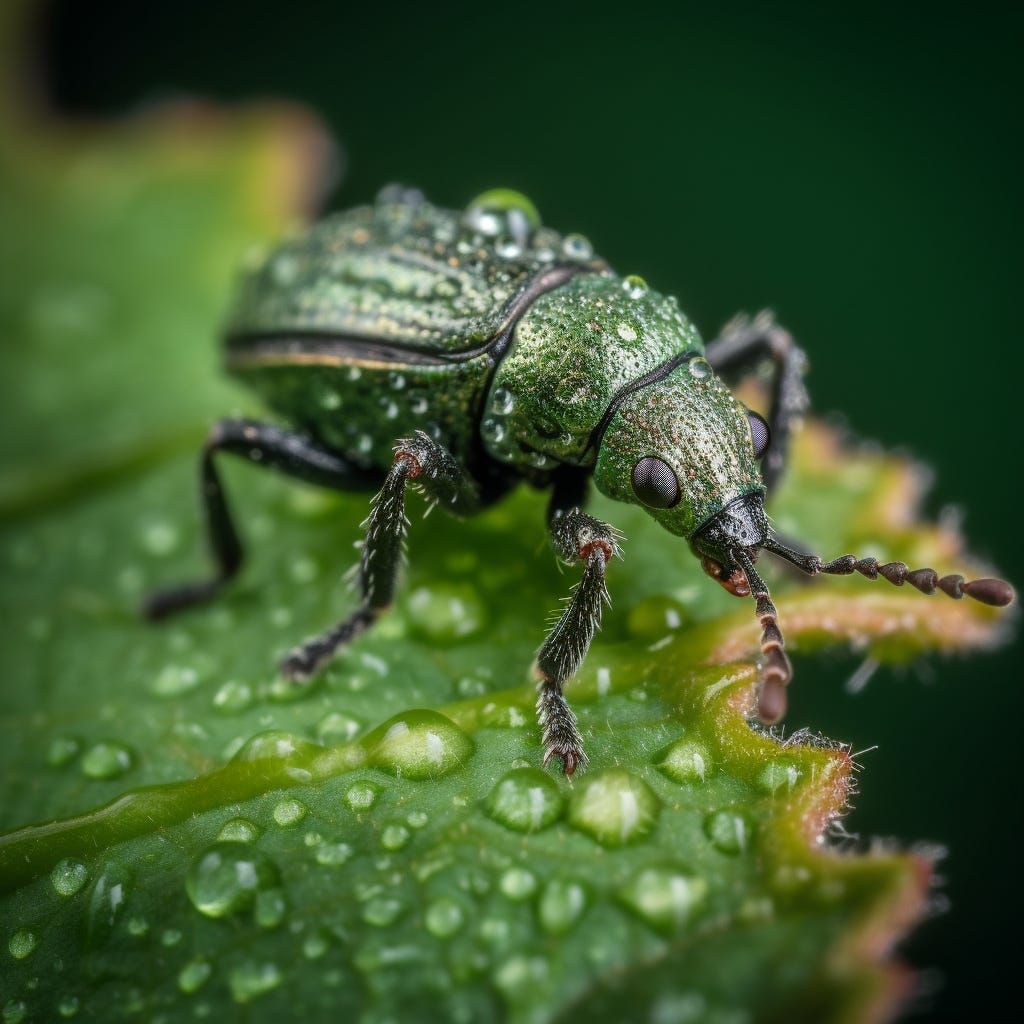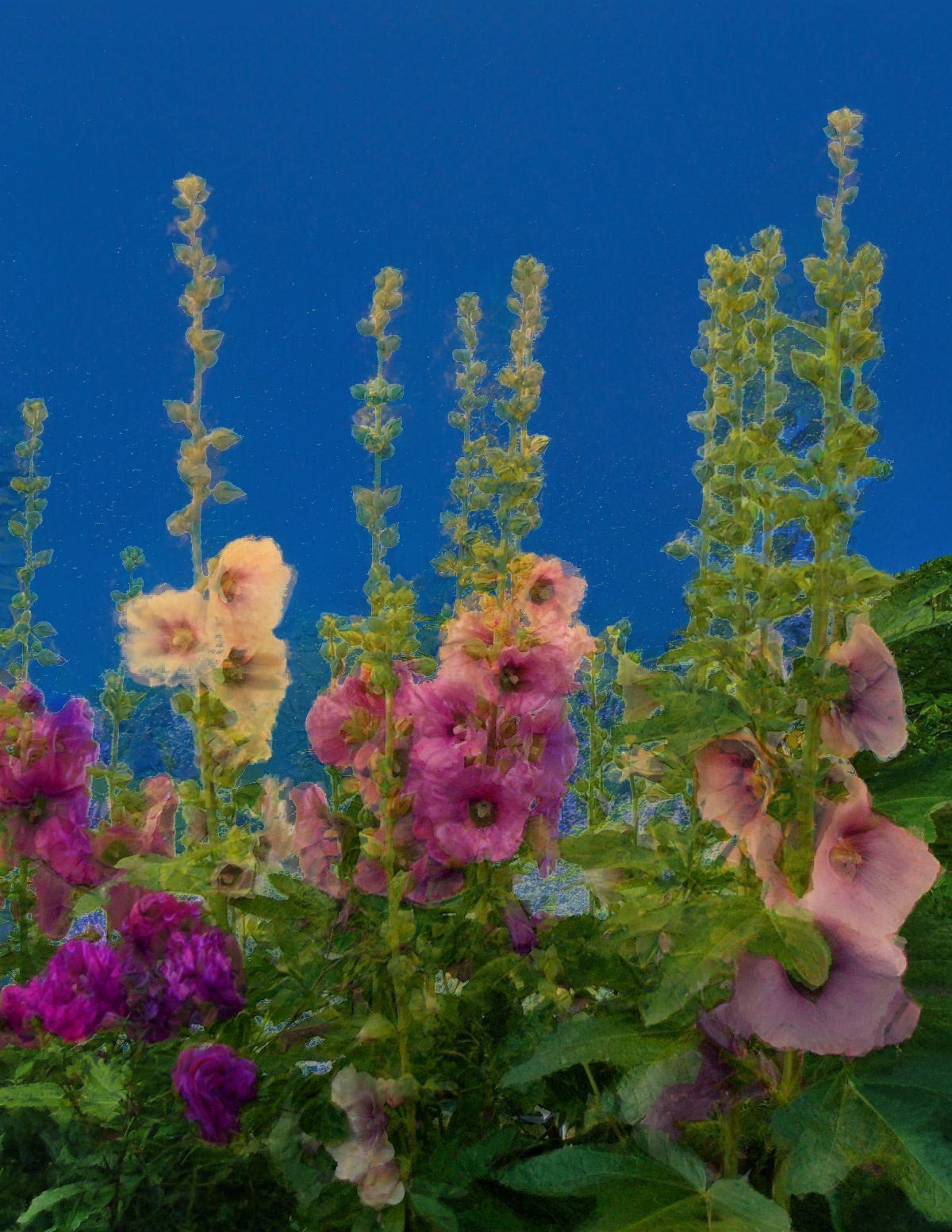NAPA, Calif. — Besides gardening I love birds, and I have several birdhouses in my garden. A few years ago, in early spring, I found a couple of plants growing at the base of a birdhouse in the backyard. At first I thought they were weeds and was tempted to pull them out, but I was also curious to see if there would be any flowers on these rapidly growing plants. I decided to leave them and see what happened.
In a few weeks I recognized that the plants were hollyhocks. Since I did not plant them, I suspect they were a gift via droppings of the birds nesting in the birdhouse.
Hollyhocks belong to the Malvaceae family, or mallows, a botanical family with more than 80 plant species. Native to Asia and Europe, hollyhocks grow best in full sun. They can be found in a variety of colors ranging from almost white to fiery red, pink, yellow and deep burgundy. Due to their height (6 to 8 feet), it’s a good idea to grow hollyhocks against a wall to provide some wind protection as the plants have a long, straight stem with buds and flowers.
Hollyhock buds start to appear in the spring with flowers blooming by midsummer. They are biennials, which means that the plant will not produce flowers until the second year after it is planted and will die after flowering.
Despite being biennial, however, they are prolific reseeders that seem to come back year after year. Once the flowers are spent, a seedpod appears in its place. In time, the seedpod turns dry and brown with mature seeds. If left undisturbed, the plant will eventually drop seeds on the ground and new plants will follow the next year.
Now I have several hollyhock plants in my garden. This year before the buds opened I noticed several small holes scattered throughout almost all the leaves. Upon closer inspection I could see several tiny black bugs with what appeared to be elongated snouts. It was clear that they were routinely dining on the hollyhocks.
I set out to investigate these tiny but destructive creatures. On the University of California Agriculture & Natural Resources Integrated Pest Management website I was able to identify them as weevils or snout beetles (family Curculionidae).
There are more than 1,000 species of weevils in California. While most are harmless, some are common garden pests with each type having its own preferred host plants. Hosts for weevils include roses, fruit and nut trees, vegetables and other herbaceous and woody plants. Adults like to eat leaves and buds, but the larvae of some species feed on the roots of the plants. You can learn more about weevils here.
The ones I found on my plants are hollyhock weevils (Rhopalapion longirostre), which are tiny black-snout beetles about one-eighth- to one-fourth-inch long. Now that I knew what was eating my hollyhocks, the next step was to send them packing.
The UCIPM site suggests that the best way to deal with weevils is to hand-pick them. I armed myself with half a cup of soapy water, hand-picked the weevils and dropped them into the cup. If you are a little squeamish about picking up bugs, try simply holding the cup close to the plant and flicking the buds, stems and leaves of the plant, which will dislodge the weevils into the soapy water.
It took more than a week of checking and sending a whole lot of weevils for a forever swim in the soapy water to control their population. I have been checking my hollyhocks daily and don’t see many weevils. When I do find a couple of stragglers, I promptly deliver them to the swimming pool (aka soapy water).
I’m so happy and grateful to the birds that hollyhocks showed up in my garden. Having them in the garden and the presence of weevils led me to learn more about them. I have learned about their growth habit, mature height and reseeding tendency. I also learned to identify a pest that plagues them, and I learned an effective, environmentally friendly way to control them.
I hope that you consider growing hollyhocks. They are beautiful and colorful, and their impressive height adds a dramatic backdrop to existing plantings. Despite their height, they don’t need staking, just wind protection. Best of all, they are very easy to grow if you can find a sunny spot in your garden.
Workshop: Join UC Master Gardeners of Napa County for a workshop on “A Succulent/Dry Garden Is Dry, Not Drab, and Totally Fab!” on Saturday, July 29, from 10 a.m. to noon at Las Flores Learning Garden, 4300 Linda Vista Ave., Napa. Learn how to put amazing water-saving succulent plants to work in your home landscape. Register here.
Library talk: Join UC Master Gardeners of Napa for “Smart Landscaping With Ornamental Vines” on Thursday, Aug. 3, from 7 to 8 p.m. via Zoom. Learn more about vine behavior, cultivation and control as well as suggested species for Napa Valley. Register to receive the Zoom link here.
Help desk: The Master Gardener Help Desk is available to answer your garden questions on Mondays and Fridays from 10 a.m. until 1 p.m at the University of California Cooperative Extension Office, 1710 Soscol Ave., Suite 4, Napa. Or send your questions to mastergardeners@countyofnapa.org. Include your name, address, phone number and a brief description of the problem. For best results, attach a photo of the plant. You can also leave a voicemail message with the same information at 707-253-4143.
Saira Bates is a UC Master Gardener of Napa County.







I need fresh seeds as our small hollyhock garden has been fallow for three years now. They are beautiful, commanding flowers, standing guard over our roses and dahlias. I have missed them....